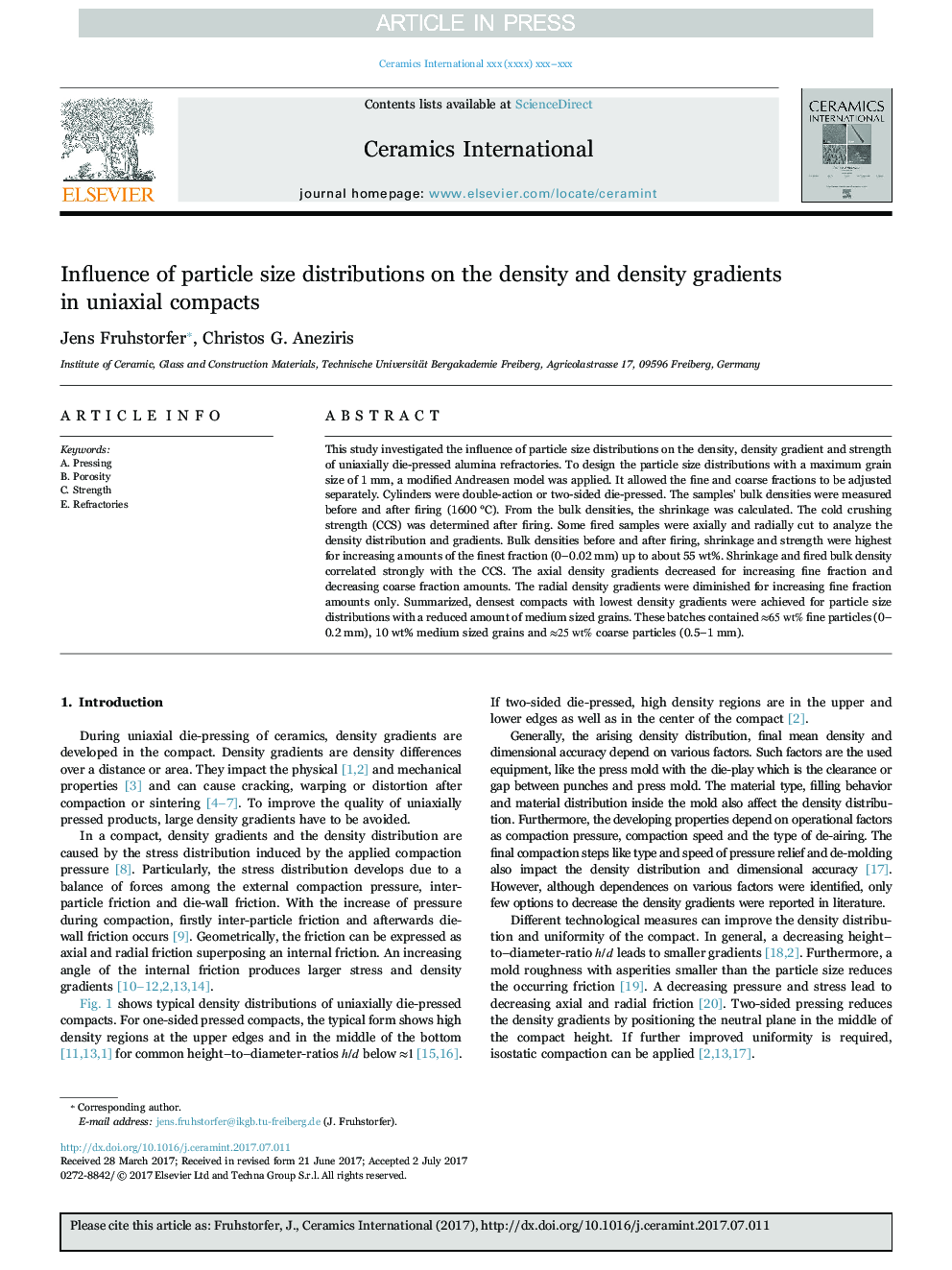| Article ID | Journal | Published Year | Pages | File Type |
|---|---|---|---|---|
| 5437812 | Ceramics International | 2017 | 10 Pages |
Abstract
This study investigated the influence of particle size distributions on the density, density gradient and strength of uniaxially die-pressed alumina refractories. To design the particle size distributions with a maximum grain size of 1 mm, a modified Andreasen model was applied. It allowed the fine and coarse fractions to be adjusted separately. Cylinders were double-action or two-sided die-pressed. The samples' bulk densities were measured before and after firing (1600 °C). From the bulk densities, the shrinkage was calculated. The cold crushing strength (CCS) was determined after firing. Some fired samples were axially and radially cut to analyze the density distribution and gradients. Bulk densities before and after firing, shrinkage and strength were highest for increasing amounts of the finest fraction (0-0.02 mm) up to about 55 wt%. Shrinkage and fired bulk density correlated strongly with the CCS. The axial density gradients decreased for increasing fine fraction and decreasing coarse fraction amounts. The radial density gradients were diminished for increasing fine fraction amounts only. Summarized, densest compacts with lowest density gradients were achieved for particle size distributions with a reduced amount of medium sized grains. These batches contained â65wt% fine particles (0-0.2 mm), 10 wt% medium sized grains and â25wt% coarse particles (0.5-1 mm).
Related Topics
Physical Sciences and Engineering
Materials Science
Ceramics and Composites
Authors
Jens Fruhstorfer, Christos G. Aneziris,
